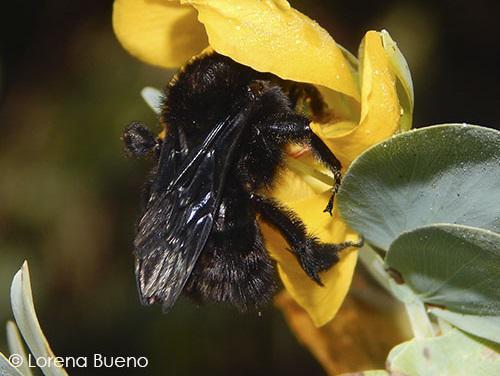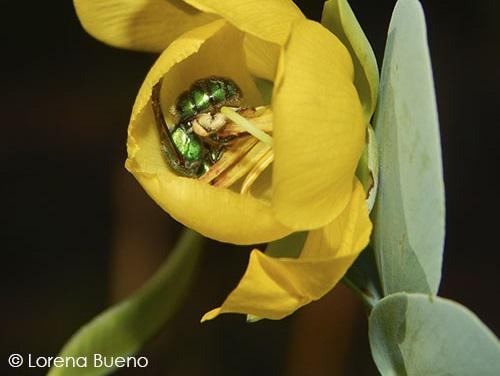Social media videos featuring the project.
Lorena Bueno Valadão Mendes
The aim of this study will be to describe the relationship between pollinators and Chamaecrista plant species in the campo rupestre. Therefore, our study will achieve the following objectives: (i) investigate the diversity of Chamaecrista plants that occur in the campo rupestre and their specialized bee pollinators and (ii) evaluate the importance of species (generalists and specialists) in the dynamics and maintenance of the pollination network. Considering that bees are responsible for the pollination of about 80% of Brazil's crops, it would be important to better understand how this specific pollination behaviour modulate the interaction with natural plant species, especially considering that our study system from the campo rupestre includes many endemic bees and other pollinator species.

Pollination is a vital ecological process for the maintenance of angiosperm communities and represents an important ecosystem service. In Brazil, about 60% of crops are dependent on pollination by animals. However, the intensification and unsustainable use of natural resources, reducing the available native vegetations, have compromised this ecosystem service. More specifically, the quality of pollination services depends on the diversity of pollinator populations, which have been affected by recent anthropogenic environmental changes. The decline of pollinator species can lead to a parallel decline of angiosperm species, as well as negative effects on agricultural productivity.

Currently, there has been a considerable progress in information sharing on the importance of biodiversity and ecosystem services for human welfare. However, there are still serious shortcomings on this knowledge, especially in some of the most biodiverse regions of the world. This makes difficult to incorporate science in decision making related to conservation actions. One of such areas where pollination information is still lacking is the Brazilian campos rupestres. Although this area comprises less than 1% of Brazil’s territory, it has about 15% of the entire Brazilian vascular flora. The idea of this study is to investigate plant-pollinator interactions, specifically the association between buzz-pollinating bees and plants with poricidal anthers, to better understand the functional role of native bee species in the community and pollination service. Buzz pollination is a type of pollination system in which bees use vibrations to collect pollen, many times the only floral resource offered by the plants. It is found in thousands of plant species, including important crops such as eggplants, blueberries, cranberries, kiwis and tomatoes. Chamaecrista is among the 20 most diverse genus of Brazilians’ flora and about 80% of the species in the genus are endemic to the country.
Additionally, 50% of species are considered endangered and most of them have restricted distribution, therefore suffering the effects of habitat degradation and habitat loss. Campo rupestre also shows high degree of diversity and endemism for this genus. One important aspect of this group is the presence of pollen as the only floral resource, which is collected by buzz-pollinating bees. Hence, this is a specialized interaction where pollination is performed only by some bees with specific traits, indicating that it is more vulnerable to species extinctions. Thereby, we aim to highlight the importance of conserving this vegetation for maintenance of ecosystem services, considering that knowledge of the biodiversity of ecosystems and interactions is an important basis for conservation.